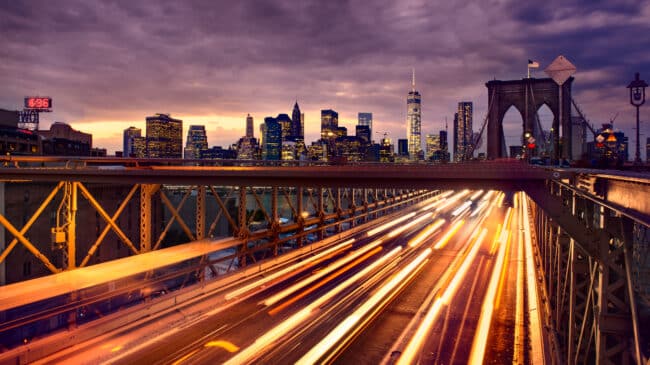Regulators at the New York City Department of Transportation just issued a rule that applies to the demonstration and testing of automated vehicles on public roads. Unfortunately, the rule fails to offer realistic guidance on how to meet the city’s safety certification requirements. This failure exposes automated vehicle developers to legal uncertainty and may deter them from testing their technologies in the city at all. It also needlessly antagonizes state and federal legislators that possess the legal authority to strip the New York City Department of Transportation (NYC DOT) of its power to regulate automated vehicles.
The city’s rule went into effect on Sept. 7, despite warnings from developers that some of its provisions are unworkable. New York state already has automated vehicle (AV) testing requirements that mirror those common in other states, but New York City’s requirements go beyond any that have been enacted across the country at the state or local level by requiring “[c]ertification by the developer of the autonomous vehicle technology that, based on previous evaluations of the autonomous vehicle technology, the test vehicle(s) will operate in New York City more safely than a human driver.”
Thus, in order to test an automated vehicle in the city, a developer must certify that its vehicle’s operation is safer than a human driver. But who is this human driver and how is safety measured and benchmarked? NYC DOT has left developers to figure this out on their own since the new rule offers no suggestion on how developers can meet this requirement.
A recent RAND Corporation study discusses these problems at length (see especially pp. 39-46). For example, using an “average driver” profile poses problems because crash statistics used to define the “average driver” include unsafe behavior such as drunk and distracted driving—metrics that simply don’t apply to AVs. Further, the concentration of the distribution of crashes in a minority of drivers means most human drivers are likely better than the “average driver.” Developers could instead employ the “best driver” profile, that exists at some value above “average driver,” or simply seek to achieve some idealized crash rate. However, each option poses a variety of problems.
The upshot, per the RAND report, is:
Defining safe human driving is tricky; measuring it is trickier. As a result, some experts “don’t believe in comparisons with human drivers. The amount of hand waving needed to make a comparison will almost make the whole thing meaningless.” Overall, the “comparison to humans is more complicated and nuanced than people think it is. There is a lot more to it. Part of it is the bad data [available about human drivers].” Measures developed for human drivers may have less applicability for AVs, and vice versa.
Defining, measuring, and assuring what “safe enough” means for automated vehicles is a very real problem but, fundamentally, it was a mistake for NYC DOT to attempt to address it. Since 1966, the United States has operated under the National Traffic and Motor Vehicle Safety Act. Among other features, this legislation ordered the creation of national minimum safety and performance regulations for newly manufactured and imported motor vehicles. These regulations, known as Federal Motor Vehicle Safety Standards (FMVSS), are administered by the National Highway Traffic Safety Administration (NHTSA).
NHTSA is the only regulatory body in the United States with the competence and capability to undertake the type of work that regulating automated vehicles requires. NYC DOT, like all state and municipal transportation agencies, is ill-equipped to understand the complex issues at play in the ongoing development of automated vehicles. Indeed, NHTSA is the nation’s expert regulator on these matters and is likely years away from promulgating new FMVSS to address these issues.
Due to NHTSA’s inaction to date, however, some state and local governments have moved to fill this policy vacuum. A number of states have expressly preempted localities from regulating automated vehicles. Under current federal law, NHTSA can preempt state and local rules that conflict with its FMVSS. Congress has previously considered “pre-preemption” provisions that would prohibit states and localities from regulating even in the case of NHTSA inaction. NYC DOT’s uniquely irresponsible AV regulations may well invite state and federal actions to strip it of power that it has demonstrated it is incapable of wielding competently.
The New York City Department of Transportation’s rule causes serious problems for the city’s would-be automated vehicle testers. The uniqueness of the AV rule’s requirements relative to all others in existence throughout the U.S. is likely to deter AV developers from testing in New York City at all. This is bad for AV developers and for innovation, but it is especially unfortunate for New York City residents, who disproportionately depend on shared transportation that fleets of automated vehicles could dramatically improve. In the meantime, AV testing has been welcomed in most states and municipalities, so it may be better for automated vehicle developers to continue their testing anywhere other than New York and hope the city’s policies eventually improve alongside the technology.


